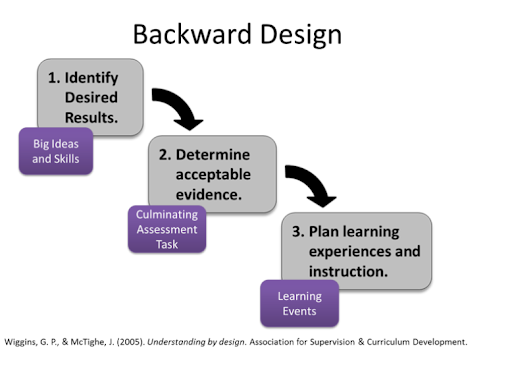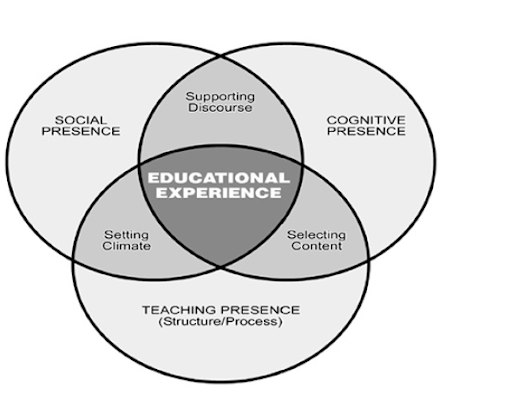Good course design can be applied to any modality (Face to Face, Online, Livestream or combination). This module will review basic course design principles you can apply to your courses. Let’s review Backward Design and Community of Inquiry as design principles which help ensure your courses meet university outcomes and enhance the student experience.
It is important to begin with the end in mind. Using a method called Backward Design each course design begins with a review of the UVU approved course outcomes. Learning objectives are created for each lesson that align back to these course outcomes. Assessments are then developed that align back to the lesson learning objectives. Lastly, lesson instructional materials are developed or procured to support the assessments and learning outcomes. The following Backward Design graphic illustrates this explanation.
Consider how you will use backward design to plan your own courses.


The Community of Inquiry (CoI) Framework is a tool used for research into online learning. In this framework, there are three "presences" that combine to create the overall educational experience. Consider how you will support each of the "presences" in your own courses.
Cleveland-Innes, M. & Campbell, P. (2012).Emotional presence, learning, and the online learning environment. The International Review of Research in Open and Distance Learning , 13 (4), 269-292.
Garrison, R., Anderson, T., & Archer, W. (n.d.). About the Framework. The Community of Inquiry. Retrieved March 7, 2022, from http://thecommunityofinquiry.org/coi
Rienties, Bart and Bethany Alden-Rivers, " Measuring and Understanding Learner Emotions: Evidence and Prospects , " Learning Analytics Review 1, 2014)